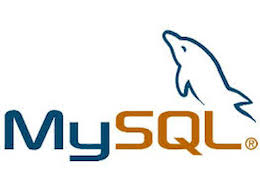How To Install MySQL on Fedora 41

MySQL, one of the world’s most popular open-source relational database management systems, is a crucial component for many applications and websites. As Fedora 41 continues to gain traction among Linux enthusiasts and professionals, understanding how to install and configure MySQL on this platform is essential. This comprehensive guide will walk you through the process of installing MySQL on Fedora 41, from preparation to optimization and maintenance.
Prerequisites
Before diving into the installation process, ensure that your system meets the following requirements:
- A Fedora 41 system with at least 2GB of RAM and 10GB of free disk space
- Root or sudo access to the system
- A stable internet connection for downloading packages
It’s also highly recommended to back up any existing data before proceeding with the installation. This precaution will help safeguard your information in case of any unforeseen issues during the process.
Updating Fedora 41
Keeping your Fedora 41 system up-to-date is crucial for ensuring compatibility and security. Follow these steps to update your system:
- Open a terminal window
- Run the following command to update all packages:
sudo dnf update -y - Wait for the update process to complete
- Reboot your system if prompted or if kernel updates were installed:
sudo reboot
After the system reboots, you’ll have a fresh, updated Fedora 41 installation ready for MySQL.
Installing MySQL on Fedora 41
Fedora 41 uses the DNF (Dandified Yum) package manager, which simplifies the process of installing MySQL. Follow these steps to install MySQL:
Adding the MySQL Repository
First, we need to add the official MySQL repository to ensure we get the latest version:
sudo dnf install https://repo.mysql.com/mysql80-community-release-fc41-1.noarch.rpmInstalling MySQL Server Package
Now that we have the repository added, let’s install the MySQL server package:
sudo dnf install mysql-community-serverDuring the installation, you may be prompted to accept the GPG key for the MySQL repository. Type ‘y’ and press Enter to continue.
Installing Additional MySQL Components (Optional)
Depending on your needs, you might want to install additional MySQL components. Here are some common ones:
- MySQL Workbench (GUI tool):
sudo dnf install mysql-workbench-community - MySQL Shell:
sudo dnf install mysql-shell
Configuring MySQL
After installation, it’s crucial to configure MySQL properly for security and optimal performance.
Starting MySQL Service
Start the MySQL service and enable it to run at system startup:
sudo systemctl start mysqld
sudo systemctl enable mysqldSecuring MySQL Installation
MySQL includes a security script to improve the installation’s security. Run it with:
sudo mysql_secure_installationThis script will guide you through several security-related options:
- Setting a root password
- Removing anonymous users
- Disallowing root login remotely
- Removing the test database
- Reloading privilege tables
It’s recommended to answer ‘Y’ (yes) to all these options for improved security.
Setting Up Database Users and Privileges
After securing your installation, you should create a new user for your applications instead of using the root account. Connect to MySQL as root:
sudo mysql -u root -pThen, create a new user and grant privileges:
CREATE USER 'newuser'@'localhost' IDENTIFIED BY 'password';
GRANT ALL PRIVILEGES ON *.* TO 'newuser'@'localhost';
FLUSH PRIVILEGES;Replace ‘newuser‘ and ‘password’ with your desired username and a strong password.
Testing MySQL Installation
To ensure your MySQL installation is working correctly, let’s perform a few tests:
Connecting to MySQL Server
Connect to the MySQL server using the new user you created:
mysql -u newuser -pEnter the password when prompted. If you can connect successfully, you’ll see the MySQL prompt.
Creating a Sample Database
Let’s create a sample database and table:
CREATE DATABASE testdb;
USE testdb;
CREATE TABLE users (id INT AUTO_INCREMENT PRIMARY KEY, name VARCHAR(50), email VARCHAR(50));
INSERT INTO users (name, email) VALUES ('John Doe', 'john@example.com');Running Basic SQL Commands
Test your new table with a simple SELECT statement:
SELECT * FROM users;If you see the data you inserted, congratulations! Your MySQL installation is working correctly.
Optimizing MySQL Performance
To get the best performance out of MySQL on Fedora 41, consider the following optimizations:
Adjusting Configuration Parameters
Edit the MySQL configuration file:
sudo nano /etc/my.cnfAdd or modify these parameters for better performance:
[mysqld]
innodb_buffer_pool_size = 1G
innodb_log_file_size = 256M
innodb_flush_log_at_trx_commit = 2
query_cache_size = 0Adjust these values based on your system’s resources and workload.
Implementing Caching Strategies
Consider using query caching for frequently accessed, read-heavy data:
SET GLOBAL query_cache_type = 1;
SET GLOBAL query_cache_size = 10485760; # 10MB cacheOptimizing Queries and Indexes
Regularly analyze and optimize your tables:
ANALYZE TABLE tablename;
OPTIMIZE TABLE tablename;Use EXPLAIN to understand query execution plans and add indexes where necessary.
Troubleshooting Common Issues
Even with careful installation and configuration, you might encounter some issues. Here are solutions to common problems:
Connection Problems
If you can’t connect to MySQL, check the following:
- Ensure the MySQL service is running:
sudo systemctl status mysqld - Check firewall settings:
sudo firewall-cmd --list-all - Verify the MySQL port (usually 3306) is open:
sudo ss -tlnp | grep mysql
Permission Errors
If you’re experiencing permission issues:
- Double-check user privileges:
SHOW GRANTS FOR 'username'@'localhost'; - Ensure the MySQL data directory has correct permissions:
sudo ls -l /var/lib/mysql
Performance Bottlenecks
For performance issues:
- Monitor system resources:
toporhtop - Check MySQL slow query log:
sudo tail -f /var/log/mysqld-slow.log - Use MySQL performance schema for detailed analysis
Maintaining and Updating MySQL
Regular maintenance is crucial for keeping your MySQL installation secure and performant:
Regular Backups
Set up automated backups using mysqldump or tools like Percona XtraBackup. For example:
mysqldump -u root -p --all-databases > backup.sqlUpdating MySQL
Keep MySQL updated with the latest security patches:
sudo dnf update mysql-community-serverMonitoring MySQL Logs
Regularly check MySQL logs for errors or warnings:
sudo tail -f /var/log/mysqld.logCongratulations! You have successfully installed MySQL. Thanks for using this tutorial for installing the MySQL database on your Fedora 41 system. For additional or useful information, we recommend you check the official MySQL website.